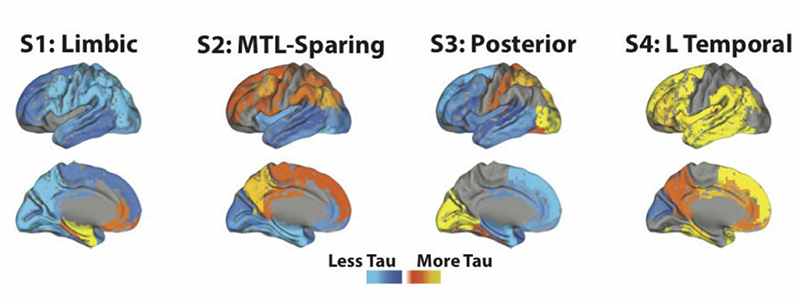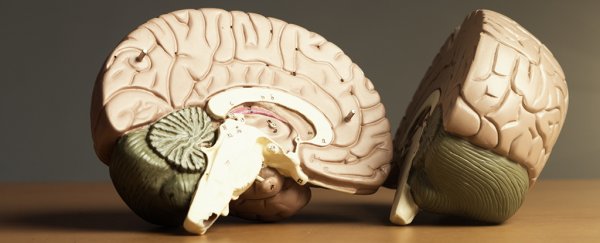The more we understand about Alzheimer's, the faster we can work towards better treatments and ultimately a cure, which makes discovering four distinct subtypes of the brain disease an important one.
Using machine learning algorithms trained at brain scans of 1,143 people either with healthy brains or brains affected by Alzheimer's, scientists have identified four distinct ways tau proteins get tangled up among neurons.
Misshapen tau proteins are closely linked to the development and progression of Alzheimer's, but it was thought that the pattern of tau entanglement in the brain was more or less the same in everyone with the disease.
"We identified four clear patterns of tau pathology that became distinct over time," says neurologist Oskar Hansson from Lund University in Sweden.
"The prevalence of the subgroups varied between 18 and 30 percent, which means that all these variants of Alzheimer's are actually quite common and no single one dominates as we previously thought."
 Images of the four variants. (Jacob Vogel)
Images of the four variants. (Jacob Vogel)
The first variant, discovered in 33 percent of cases, sees tau spreading mainly within the temporal lobe and affecting patient memory. The second, found 18 percent of the time, spreads across the other parts of the cerebral cortex – memory problems are less common, but difficulties in planning and performing actions are more common.
The third variant, found in 30 percent of all cases, is where tau spreads in the visual cortex (used for processing sight) – patients have trouble orienting themselves, judging distance, and identifying shapes. The fourth and final variant, seen in 19 percent of cases, spreads asymmetrically in the brain's left hemisphere and affects language processing.
The discoveries were made possible by detailed, 3D Positron Emission Tomography (PET) scans. Follow-up analysis over two years confirmed the presence of these four distinct patterns in people with Alzheimer's, and it could help explain why different people show different symptoms as the disease progresses.
"This would suggest that Alzheimer's is an even more heterogeneous disease than previously thought," says neuroscientist Jacob Vogel from McGill University in Canada.
"We now have reason to reevaluate the concept of typical Alzheimer's, and in the long run also the methods we use to assess the progression of the disease."
Alzheimer's is already the leading form of dementia worldwide, and the number of affected people continues to rise sharply as populations age. We know that it causes a steady loss of neurons, but it's still not clear exactly why that happens – and as yet, there's no known cure.
Progress is being made, though. Previous studies have also looked at splitting Alzheimer's up until subtypes to give us a better understanding of the disease, while we're also learning more about neurons vulnerable to Alzheimer's, and how its effects might be reversed.
The next step is to extend the analysis across a longer time period – up to 10 years, suggest the researchers. Knowing which subtype is present in a patient could, for example, give them a better idea of which symptoms to expect and when, as well as opening up options for new treatments.
"This knowledge is important for doctors who assess patients with Alzheimer's, and it also makes us wonder whether the four subtypes might respond differently to different treatments," says Hansson.
The research has been published in Nature Medicine.
